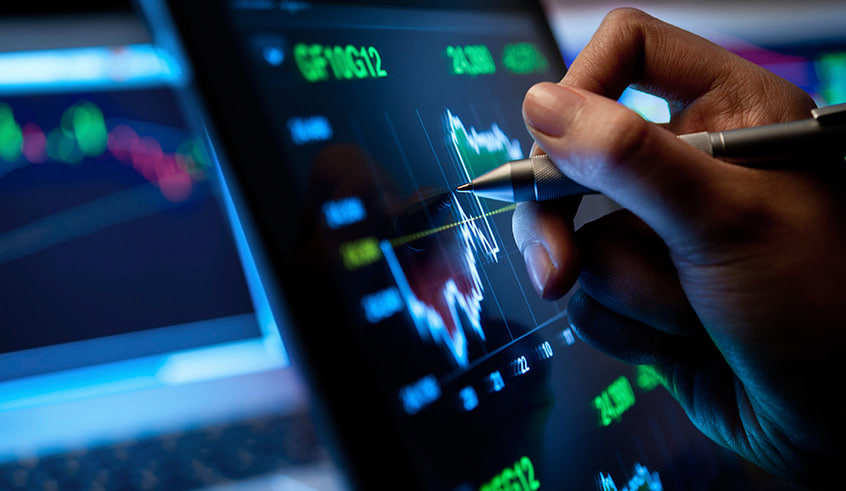Unlock Your Artistic Potential: A Comprehensive Guide to Mastering Digital Painting
Meta Description: Dive deep into the world of digital painting with this comprehensive guide. Explore essential tools, techniques, and resources to unleash your creativity and transform your digital art from novice to pro.
Imagine this: You're holding a digital brush, ready to create worlds on your canvas, to breathe life into characters, and to capture the essence of emotions in vibrant hues. Digital painting is more than just a hobby; it's a gateway to unleashing your creativity, expressing yourself, and crafting stunning works of art. But where do you begin?
This in-depth guide is your ultimate companion to mastering digital painting, regardless of your experience level. We'll delve into the essential tools, techniques, and resources that will empower you to take your digital art from novice to pro. Get ready to embark on a journey of artistic exploration, where every stroke of your digital brush is a step towards realizing your artistic vision.
The Digital Canvas: Essential Tools for Your Artistic Journey
The world of digital painting is brimming with tools and software that can cater to diverse styles and preferences. Choosing the right tools is crucial for a seamless and creative experience.
1. Digital Painting Software: The Heart of Your Artistic Expression
- Adobe Photoshop: The industry standard, Photoshop offers a vast array of tools, filters, and features, making it a favorite among professionals and enthusiasts alike.
- Clip Studio Paint: A powerhouse for comic art and illustration, Clip Studio Paint is known for its intuitive tools, brushes, and animation features.
- Procreate: Exclusive to iPad, Procreate boasts a streamlined interface, powerful brushes, and impressive performance, making it a popular choice for mobile artists.
- Krita: This free and open-source software is a great option for beginners and seasoned artists, offering a powerful suite of tools and a user-friendly interface.
Pro Tip: Experiment with different software to find the one that best suits your workflow and style. Don't be afraid to try out free trials and explore the features each program offers.
2. Digital Painting Brushes: Your Creative Allies
Brushes are the lifeblood of digital painting. The right brush can transform your strokes into realistic textures, expressive brushstrokes, or whimsical effects.
- Hard Round Brush: Ideal for creating clean lines, details, and precise strokes.
- Soft Round Brush: Perfect for blending, shading, and achieving smooth transitions.
- Textured Brushes: Add realism and depth to your paintings by simulating real-world materials like canvas, charcoal, or watercolor.
- Custom Brushes: Explore the vast libraries of custom brushes available online or create your own to personalize your digital painting experience.
3. Graphics Tablet: Bridging the Gap Between You and Your Digital Canvas
A graphics tablet allows you to translate your hand movements directly onto the screen, offering a natural and intuitive way to paint digitally.
- Wacom: Known for their high quality and responsiveness, Wacom tablets are the industry standard for professional artists.
- Huion: Offering a more budget-friendly option, Huion tablets provide excellent value for their price.
- XP-Pen: XP-Pen tablets are a great choice for beginners and hobbyists, providing a balance of affordability and functionality.
Pro Tip: Look for tablets with pressure sensitivity, which allows you to vary the thickness and opacity of your brushstrokes based on how hard you press.
Unlocking Your Digital Painting Prowess: Essential Techniques
Now that you have your digital tools in place, it's time to dive into the techniques that will transform your digital art skills.
1. The Foundation of Digital Painting: Line Art and Sketching
- Line Art: A key step in many digital painting workflows, line art provides a clear structure for your painting. Use a light-colored pencil or brush to create your initial sketch, then refine it with a darker, more defined line.
- Sketching: Experiment with different pencil brushes, blending modes, and layer effects to create dynamic sketches. Don't be afraid to play with shapes, textures, and perspectives.
2. Building Layers: Depth and Dimension in Your Artwork
- Base Colors: Establish the foundation of your painting by laying down the base colors for your subject.
- Shading: Add depth and dimension to your artwork by applying shadows and highlights. Experiment with different blending modes and brushes to create subtle or dramatic effects.
- Color Theory: Understanding color theory is crucial for creating harmonious and visually appealing artwork. Learn about complementary colors, color harmonies, and color temperature to elevate your digital paintings.
3. Unleashing Your Creativity: Experiment with Styles and Techniques
- Realism: Aim for a photorealistic look by focusing on detail, precise brushwork, and realistic lighting.
- Impressionism: Capture the essence of light and movement through loose brushstrokes and expressive color choices.
- Abstract Art: Explore the world of non-representational art by experimenting with shapes, colors, and textures.
- Surrealism: Embrace the unexpected and create dreamlike imagery by combining elements of reality and fantasy.
4. Enhancing Your Artwork: Mastering Effects and Filters
- Texture: Add depth and realism to your artwork by applying textures to surfaces, fabrics, or backgrounds.
- Lighting: Use lighting effects to enhance the mood and atmosphere of your painting. Experiment with color temperature, shadows, and highlights.
- Filters: Explore the vast library of filters available in digital painting software. Use filters to add special effects, enhance colors, or create unique artistic styles.
Fueling Your Artistic Growth: Resources and Inspiration
The journey of digital painting is a constant learning process. Embrace the resources and inspiration available to elevate your skills.
1. Online Learning Platforms and Tutorials
- Skillshare: Access a vast library of digital painting courses taught by experienced artists.
- Udemy: Find comprehensive courses covering various digital painting techniques, software, and styles.
- YouTube: Dive into the world of digital painting tutorials by talented artists sharing their knowledge and techniques.
2. Inspiring Communities and Galleries
- ArtStation: An online platform showcasing breathtaking digital art from artists around the world.
- DeviantArt: A diverse community of artists, offering inspiration, feedback, and resources.
- Instagram: Follow artists whose work inspires you and engage with the digital art community.
3. The Power of Practice and Experimentation
- Daily Sketches: Develop a daily practice of sketching and experimenting with different techniques.
- Challenge Yourself: Take on projects outside your comfort zone to push your boundaries and expand your skills.
- Seek Feedback: Share your work with other artists and receive constructive criticism to improve your craft.
The Power of Digital Painting: Unleashing Your Inner Artist
Digital painting is more than just a hobby; it's a powerful tool for self-expression, creativity, and storytelling. It allows you to explore your artistic vision, experiment with different styles, and capture the beauty of the world around you.
Whether you're a seasoned artist looking to expand your repertoire or a beginner eager to embark on this creative journey, digital painting offers a world of possibilities. Embrace the tools, techniques, and resources available, and let your artistic potential flourish.
FAQs
1. What type of computer do I need for digital painting?
You'll need a computer with a decent processor, enough RAM, and a dedicated graphics card for a smooth digital painting experience. Look for computers with at least 8GB of RAM and a dedicated graphics card with at least 2GB of memory.
2. How long does it take to learn digital painting?
There's no one-size-fits-all answer. Learning digital painting depends on your natural aptitude, dedication, and the amount of time you invest in practice. You can start seeing results within a few weeks of consistent practice, but mastering the art takes time and effort.
3. Is digital painting expensive?
The cost of digital painting can vary depending on the tools you choose. If you're starting out, you can find affordable options like a graphics tablet and free or open-source software. As your skills grow, you may choose to invest in more advanced tools like a high-end graphics tablet or professional software.
4. What are some common mistakes beginners make in digital painting?
Common mistakes include:
- Ignoring color theory: Understanding color theory is crucial for creating harmonious and visually appealing artwork.
- Using too many brushes: Limit yourself to a few essential brushes to avoid overwhelming yourself.
- Not practicing regularly: Consistent practice is key to improving your skills.
- Not seeking feedback: Share your work with other artists and get constructive criticism to help you grow.
5. What are some tips for creating realistic digital paintings?
- Study anatomy: Learn the structure of the human body and how muscles and bones move.
- Focus on detail: Pay close attention to details like wrinkles, textures, and lighting.
- Use reference images: Use photos as reference to ensure accuracy and realism.
6. How can I get started with digital painting?
- Choose a software: Select a digital painting software that suits your budget and needs.
- Get a graphics tablet: Invest in a graphics tablet to provide a more natural and intuitive painting experience.
- Explore tutorials and courses: Learn from experienced artists through tutorials, courses, and online communities.
- Start practicing: The key to mastery is consistent practice.
Conclusion
Digital painting is a captivating and rewarding art form that allows you to unleash your creativity, express yourself, and create stunning works of art. With the right tools, techniques, and dedication, you can embark on a journey of artistic exploration, transforming your digital art from novice to pro. Remember, the key lies in consistent practice, embracing challenges, and finding inspiration in the works of other artists. So, pick up your digital brush, explore the world of digital painting, and let your creativity shine!



